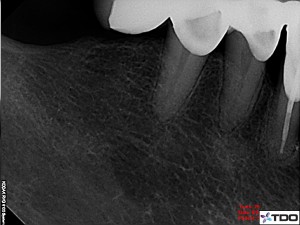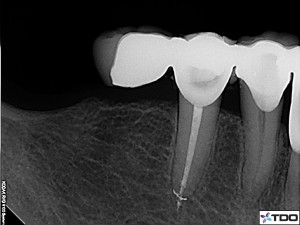One of the current trends in dentistry is the increase in the use of dental implants. The specialty of Endodontics has a long and storied history. It was for many years a frequent component of the final treatment modalities employed to allow patients to continue to function in the absence of removable prostheses. The emergence of dental implants has led to a number of changes:
- A decrease in procedures once considered standard for saving broken down teeth(i.e. Crown Lengthening, Nonsurgical and Surgical Endodontic treatment)
- A necessary look at the success of dental implants and Endodontic therapy
- An increasing number of practitioners involved in both the restorative and surgical aspects of implant therapy.
As a general dentist for eight years, I was fortunate to have gained significant experience in dental implant therapy. I took a number of implant courses, most notably at the Midwest Implant Institute. I had the opportunity to treatment plan, surgically place and restore implants for my patients for several years in general dentistry. Although I no longer provide implant therapy, I still believe this experience was invaluable.
That’s right, I no longer perform implant therapy. The decision for me was an easy one. As an Endodontic specialist, I am charged with solving Endodontic problems daily using my critical thinking skills and the available scientific evidence. In addition, I have the ability to resolve clinical problems that I may encounter, or are encountered by my referring doctors. Although I have the clinical ability to place and restore dental implants, I cannot say with absolute certainty that my abilities allow for troubleshooting those cases that go awry.
With that said, I am still a big fan of dental implants. I think this case will show you why.
The following case presented to my office earlier this year. It started as a diagnostic dilemma, and evolved into what I hope will be a comprehensive treatment plan.
This patient had a “toothache” that was worsening over the course of the week. She had a history of cold sensitivity that began when she started periodontal treatment many years ago. At the time of her visit both tooth #28 and #29 were exquisitely sensitive to both percussion and cold. The response to both stimuli was slightly more marked on #29, and this was repeatable. The periodontal probings were 4mm or less at all sites in the quadrant and there was no sensitivity to palpation. However, the EPT was significantly different. Although there was no sensitivity on #28 at the lowest setting, #29 responded violently. After a long discussion, the patient and I both decided that her discomfort was continuing to increase and the option of leaving her without treatment heading into the weekend was not an acceptable one.
Initial diagnosis #29:
Symptomatic Irreversible Pulpitis
Symptomatic Apical Periodontitis
Upon access, gross caries were noted, as well as a hyperemic pulp. After complete caries removal and instrumentation, the internal aspect of the retainer on #29 was sealed, Calcium hydroxide was placed, the tooth was provisionalized and the patient was scheduled to have treatment completed. A postoperative phone call 48 hours later confirmed relief of symptoms. Treatment was completed without incident one week later.
Now what does any of this have to do with implants?
If you evaluate tooth #29, it supports a cantilever in the place of tooth #30. While one can never be absolutely certain, the pattern of caries inside of the retainer was suggestive of leakage secondary to function on the cantilever. Even if this is not the case, the demands placed on the new core and post that were slated to be placed in tooth #29 would likely be too great in the long term. This would eventually lead to a fracture, endodontic failure or both. Either way, the patient would be looking at some additional restorative treatment.
I like to see my root canals last for a long time. After assessing this clinical situation and discussing my thoughts with the referring doctor, he and I both thought it was a good idea for me to share my thoughts with the patient. Although the root canal resolved her discomfort in the short term, she had other clinical challenges that she would need to address in the very near future if she wanted to continue to function in the manner that she was accustomed to.
The solution could be as minimally involved as a single implant based restoration distal to #29 after removing the cantilever crown. It may also involve a full mouth reconstruction. The scope of the solution was a discussion that she would need to have with her general dentist. My job was to ensure that she expected to have that discussion with her general dentist, and that she understood that this was a necessary conversation if she wanted to achieve optimal oral health. I wanted to be certain that she left my practice with the understanding that the first symptoms were noted on tooth #29, but that an untenable occlusal situation was the true etiology of the problem. Addressing this larger situation was imperative for long term tooth retention.
Optimal oral health for all of our patients is the ultimate goal. I appreciate working with doctors who allow me to be a part of their team.

